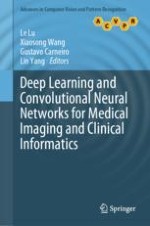2019 | OriginalPaper | Buchkapitel
17. Deep Learning for Functional Brain Connectivity: Are We There Yet?
verfasst von : Harish RaviPrakash, Arjun Watane, Sachin Jambawalikar, Ulas Bagci
Erschienen in: Deep Learning and Convolutional Neural Networks for Medical Imaging and Clinical Informatics
Aktivieren Sie unsere intelligente Suche, um passende Fachinhalte oder Patente zu finden.
Wählen Sie Textabschnitte aus um mit Künstlicher Intelligenz passenden Patente zu finden. powered by
Markieren Sie Textabschnitte, um KI-gestützt weitere passende Inhalte zu finden. powered by
